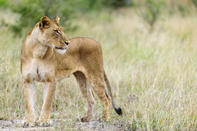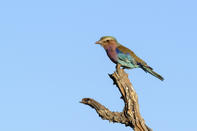Diverse Unspoilt Habitats
Welgevonden Private Nature Reserve forms part of the Waterberg region in South Africa’s Limpopo province. In 2001, UNESCO declared part of this region as the Waterberg Biosphere Reserve, which encompasses Welgevonden.

Efforts to conserve the natural environment in the area have created a haven of diverse unspoilt habitats and plenty of wildlife to fill them. This includes 129 mammals, 350 bird species and 2 000 plant varieties, much of which can be found in Welgevonden. The landscape consists of sprawling savannas and a semi-deciduous forest. Some of the trees in the area are Mountain Syringa, Silver-leaf Terminalia sericea and Lavender trees. They are mostly leafless during the winter.
Signal grass, Goose grass and Heather-topped grass are some of the native grasses in the area that help feed indigenous grazers such as impala, kudu, klipspringer and Blue wildebeest. Some of the other indigenous animals on the reserve are giraffe, warthog and rhinos and other mammals include the Big Five, brown hyena, honey badger and cheetah amongst others.
Welgevonden also houses a variety of reptiles, among which are various poisonous snakes like the deadly black mamba and spitting cobra. The cliff habitat region in the reserve is home to the African porcupine as well as the native Fever Tree which was believed in Bushman tradition to have special power that allows the living to communicate with the dead. Rivers and wetlands in Welgevonden are where you can find much of the birdlife as well as Nile crocodile and hippos.
Best Time to Visit

The climate of Welgevonden Private Game Reserve is generally warm and temperate. The year is split into three distinct seasons: winter, summer and the wet season. Winters at Welgevonden are dry, start in May and end in July. Because the area is so dry the savanna grass is short and more sparse so it is easier to spot wildlife.
Animals are also more mobile in the winter because they need to find water. For these reasons, game viewing is usually best done during winter. The weather starts warming up in August and rises steadily through to October. This is summer, and although it is still mostly dry, there are occasional thunderstorms.
From November through to April the rains come. In the wet season temperatures are usually high, think 30°C maximums and over 15°C minimums. Rainfall peaks in December and January at about 120 mm of rain. This is best time of year to go birdwatching in Welgevonden.